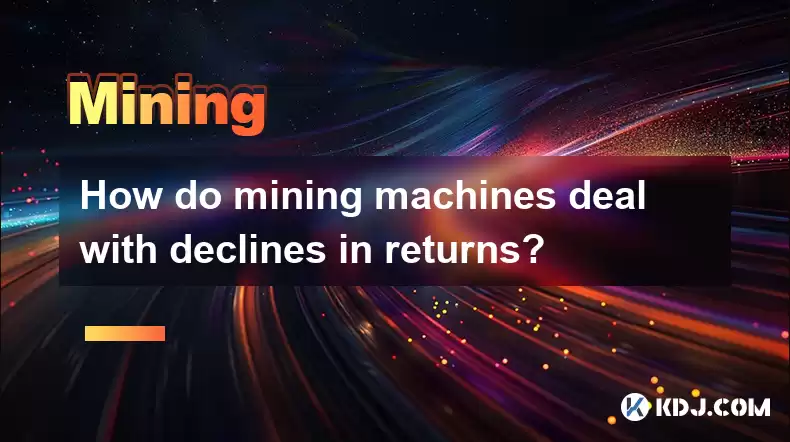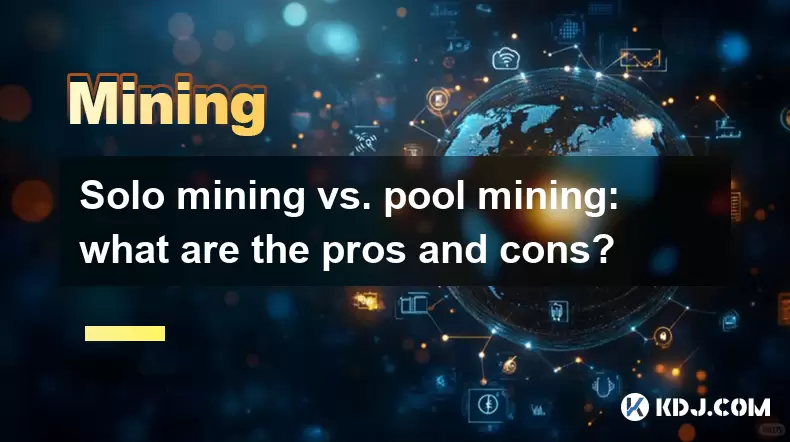-
 Bitcoin
Bitcoin $114200
0.00% -
 Ethereum
Ethereum $3637
0.56% -
 XRP
XRP $2.950
-2.01% -
 Tether USDt
Tether USDt $0.9999
0.02% -
 BNB
BNB $761.0
0.55% -
 Solana
Solana $164.1
-1.38% -
 USDC
USDC $0.9999
0.02% -
 TRON
TRON $0.3332
0.36% -
 Dogecoin
Dogecoin $0.2012
-0.52% -
 Cardano
Cardano $0.7261
-1.41% -
 Hyperliquid
Hyperliquid $37.62
-2.13% -
 Stellar
Stellar $0.3930
-2.65% -
 Sui
Sui $3.441
-0.16% -
 Bitcoin Cash
Bitcoin Cash $563.8
0.70% -
 Chainlink
Chainlink $16.50
0.09% -
 Hedera
Hedera $0.2424
-0.14% -
 Ethena USDe
Ethena USDe $1.001
0.01% -
 Avalanche
Avalanche $22.20
0.00% -
 Litecoin
Litecoin $118.0
-2.48% -
 UNUS SED LEO
UNUS SED LEO $8.991
0.12% -
 Toncoin
Toncoin $3.195
-3.87% -
 Shiba Inu
Shiba Inu $0.00001217
0.12% -
 Uniswap
Uniswap $9.674
-0.21% -
 Polkadot
Polkadot $3.633
1.00% -
 Monero
Monero $295.3
-0.82% -
 Dai
Dai $0.9999
0.00% -
 Bitget Token
Bitget Token $4.321
-0.41% -
 Cronos
Cronos $0.1392
0.73% -
 Pepe
Pepe $0.00001027
-0.89% -
 Aave
Aave $258.5
0.32%
How do mining machines deal with declines in returns?
Declining cryptocurrency mining returns spur manufacturers to innovate with efficient ASICs, while miners diversify coins and optimize operations to maintain profitability despite rising energy costs and government regulations.
Mar 26, 2025 at 04:49 am

Key Points:
- Mining machine manufacturers adapt to declining returns through technological innovation.
- Miners adjust their strategies, focusing on efficiency and diversifying cryptocurrencies.
- The market responds to declining returns through consolidation and adaptation.
- Energy costs play a crucial role in the profitability of mining operations.
- Regulation and government policies significantly impact the profitability of mining.
How Do Mining Machines Deal with Declines in Returns?
The cryptocurrency mining landscape is dynamic, characterized by fluctuating profitability. As the difficulty of mining increases and the price of cryptocurrencies fluctuates, the returns for mining machines inevitably decline. This necessitates continuous adaptation and innovation from both the manufacturers of the mining hardware and the miners themselves.
Mining machine manufacturers are constantly striving to improve their hardware. This includes developing Application-Specific Integrated Circuits (ASICs) with increased hash rates and improved energy efficiency. Higher hash rates mean more chances to solve cryptographic puzzles and earn rewards, while improved energy efficiency reduces operating costs, thus mitigating the impact of declining returns. Competition drives this innovation, pushing the boundaries of what's possible in mining hardware.
Miners themselves face the challenge of adapting to reduced profitability. One key strategy is to focus on maximizing efficiency. This involves optimizing cooling systems, selecting the most cost-effective energy sources, and carefully managing their mining operations to minimize waste. Efficient mining operations can significantly impact profitability even with declining returns per unit of hash power.
Diversification is another crucial strategy for miners. Instead of focusing solely on mining one cryptocurrency, miners can diversify their operations across various cryptocurrencies. This mitigates the risk associated with price fluctuations of a single cryptocurrency. If the profitability of mining one coin decreases, miners can shift their resources to more profitable alternatives. This flexible approach is vital for long-term sustainability.
The market itself responds to declining returns through consolidation. Less profitable mining operations are forced to shut down, leading to a reduction in the overall mining capacity. This, in turn, can increase the profitability for the remaining, more efficient operations. The market adjusts to the changing dynamics through this process of natural selection. The most efficient and well-managed operations survive and thrive, while less efficient ones are eliminated.
Energy costs play a pivotal role in the profitability of cryptocurrency mining. High energy costs can quickly erode profits, especially when returns are already declining. Miners often seek locations with cheap and readily available energy sources, such as hydroelectric power or regions with favorable energy policies. The cost of electricity is a significant factor in the decision-making process of miners, influencing where they choose to operate their mining rigs.
Government regulations and policies also significantly impact the profitability of cryptocurrency mining. Some governments actively support the industry through favorable energy policies or tax incentives, while others impose strict regulations or outright bans. These regulatory landscapes directly influence the viability and profitability of mining operations. Navigating these regulatory environments is crucial for miners to maintain their operations. The regulatory uncertainty adds another layer of complexity to the already volatile nature of the cryptocurrency mining industry.
The ongoing development of new consensus mechanisms, such as Proof-of-Stake (PoS), also poses a challenge to traditional Proof-of-Work (PoW) mining. PoS networks require significantly less energy and do not rely on specialized mining hardware to the same extent. This shift in technology could lead to a decline in the demand for traditional mining machines and necessitate further adaptation from manufacturers and miners. The transition to more energy-efficient consensus mechanisms presents a fundamental shift in the landscape.
Mining farms often employ sophisticated monitoring and control systems to optimize their operations. This includes real-time monitoring of hash rates, energy consumption, and temperatures. These systems allow miners to quickly identify and address any issues that may impact their profitability. This proactive approach helps mitigate potential losses and maximize efficiency in a challenging environment.
Furthermore, many mining operations are adopting cloud mining services. This allows individuals and smaller operations to participate in mining without the need for significant upfront investment in hardware. Cloud mining services manage the hardware and infrastructure, allowing users to focus on managing their investments. This accessibility can broaden participation in mining, despite declining returns.
The development of more efficient cooling systems is crucial for maximizing the lifespan and performance of mining hardware. Heat is a major enemy of mining equipment, leading to reduced performance and increased risk of failure. Efficient cooling solutions can significantly extend the operational life of mining machines and reduce maintenance costs. Investing in advanced cooling technology is an important aspect of maximizing returns in a competitive market.
Frequently Asked Questions:
Q: What happens to old mining machines when returns decline significantly?
A: Old mining machines become less profitable and may be repurposed, sold for scrap, or simply discarded. Their reduced efficiency makes them uncompetitive in the face of newer, more powerful hardware.
Q: Can miners still profit with declining returns?
A: Profitability depends on many factors, including energy costs, the price of the cryptocurrency being mined, and the efficiency of the mining hardware. While returns might decline, some miners can still remain profitable through optimization and diversification.
Q: How do manufacturers respond to the obsolescence of their machines?
A: Manufacturers continually develop and release new, more efficient mining hardware to stay ahead of the curve and maintain market share. This constant innovation is essential for survival in this competitive industry.
Q: What role does software play in dealing with declining returns?
A: Sophisticated software helps manage and optimize mining operations, monitor performance, and adapt to changing market conditions, improving efficiency and potentially offsetting declining returns.
Q: What are the environmental concerns related to declining returns and the subsequent increase in mining operations?
A: Declining returns may push some miners out of the market but others might seek cheaper energy solutions, potentially increasing environmental strain in some areas. The overall energy consumption of mining remains a significant environmental concern.
Disclaimer:info@kdj.com
The information provided is not trading advice. kdj.com does not assume any responsibility for any investments made based on the information provided in this article. Cryptocurrencies are highly volatile and it is highly recommended that you invest with caution after thorough research!
If you believe that the content used on this website infringes your copyright, please contact us immediately (info@kdj.com) and we will delete it promptly.
- Ethereum, Transaction Volumes, and SEC Staking: Navigating the Regulatory Landscape
- 2025-08-06 22:30:13
- Crypto, Tokens, and Metrics: Navigating the New Frontier
- 2025-08-06 23:09:22
- Crypto Market Buzz: PROVE Surges as Coinbase, Binance List Token
- 2025-08-06 22:30:13
- BlockDAG, Crypto, and Binance Coin: The Hottest Trends You Can't Ignore
- 2025-08-06 23:50:13
- BlockSack Who? Base Network and Layer 2s Shake Up the Crypto Scene
- 2025-08-06 23:10:13
- DOGE, SHIB, and Remittix ROI: Shifting Sands in the Crypto Landscape
- 2025-08-06 23:50:13
Related knowledge

What are the differences between mining on Windows vs. Linux?
Aug 06,2025 at 11:29pm
Overview of Cryptocurrency Mining PlatformsCryptocurrency mining involves using computational power to solve complex cryptographic puzzles and validat...

Can you mine cryptocurrency using solar power?
Aug 07,2025 at 12:00am
Understanding the Basics of Cryptocurrency MiningCryptocurrency mining involves validating transactions on a blockchain network by solving complex cry...

How to build a mining rig inside a PC case?
Aug 06,2025 at 11:01pm
Understanding the Basics of a Mining Rig in a PC CaseBuilding a mining rig inside a PC case involves transforming a standard computer chassis into a d...

How to set up a mining farm with multiple rigs?
Aug 07,2025 at 12:38am
Understanding the Basics of a Multi-Rig Mining FarmSetting up a mining farm with multiple rigs begins with understanding the core components involved ...

How to use a server PSU for a crypto mining rig?
Aug 06,2025 at 08:39pm
Understanding Server PSUs and Their Relevance to Crypto MiningCrypto mining rigs demand stable, high-wattage power supplies to run multiple GPUs effic...

Solo mining vs. pool mining: what are the pros and cons?
Aug 06,2025 at 08:15pm
Understanding Solo Mining in CryptocurrencySolo mining refers to the process where an individual miner attempts to solve a block on their own without ...

What are the differences between mining on Windows vs. Linux?
Aug 06,2025 at 11:29pm
Overview of Cryptocurrency Mining PlatformsCryptocurrency mining involves using computational power to solve complex cryptographic puzzles and validat...

Can you mine cryptocurrency using solar power?
Aug 07,2025 at 12:00am
Understanding the Basics of Cryptocurrency MiningCryptocurrency mining involves validating transactions on a blockchain network by solving complex cry...

How to build a mining rig inside a PC case?
Aug 06,2025 at 11:01pm
Understanding the Basics of a Mining Rig in a PC CaseBuilding a mining rig inside a PC case involves transforming a standard computer chassis into a d...

How to set up a mining farm with multiple rigs?
Aug 07,2025 at 12:38am
Understanding the Basics of a Multi-Rig Mining FarmSetting up a mining farm with multiple rigs begins with understanding the core components involved ...

How to use a server PSU for a crypto mining rig?
Aug 06,2025 at 08:39pm
Understanding Server PSUs and Their Relevance to Crypto MiningCrypto mining rigs demand stable, high-wattage power supplies to run multiple GPUs effic...

Solo mining vs. pool mining: what are the pros and cons?
Aug 06,2025 at 08:15pm
Understanding Solo Mining in CryptocurrencySolo mining refers to the process where an individual miner attempts to solve a block on their own without ...
See all articles

























































































